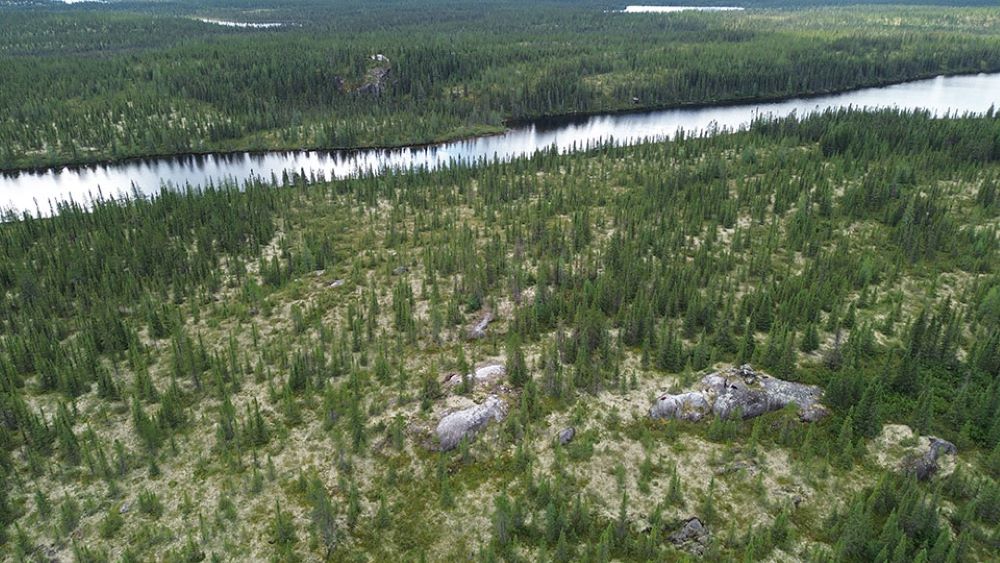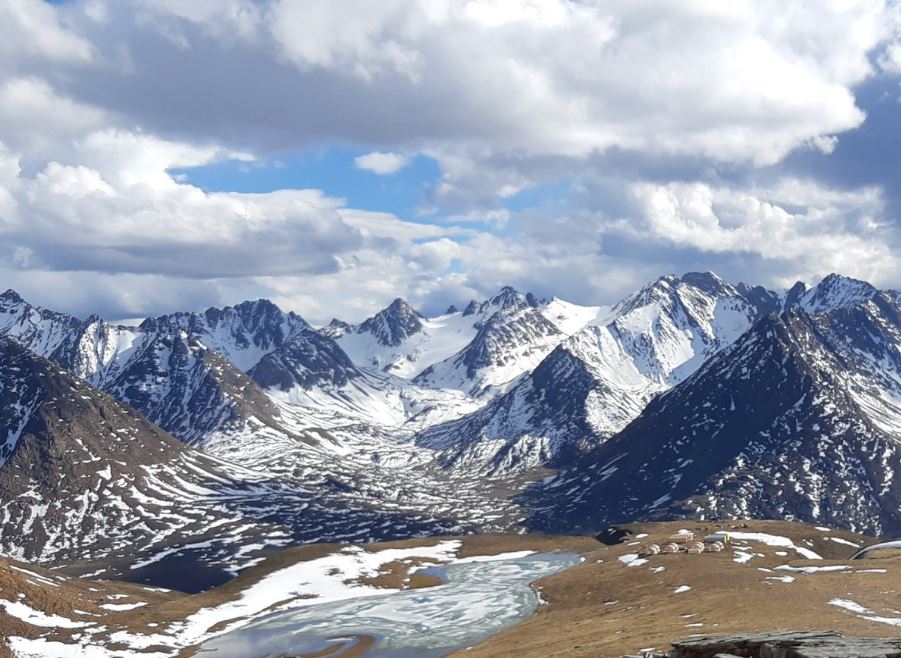Moving Ahead
Wesdome Gold’s Eagle River gold mine is located 50 km due west of Wawa, and 65 km southeast of the Hemlo property featured in the previous article. It is perched on the Algoma Plateau about 310 m above Lake Superior and 5 km inland from Point Isacor – the prominent headland that defines the geography of the northeast Lake Superior coastline.
This rugged landscape remained essentially unexplored due to its inaccessibility until the Hemlo discovery in 1981-1982. At that time, prospectors Peter Ferderber and Don McKinnon staked the entire Mishibishu greenstone belt – some 8,000 claims in a grand-scale area play touted as a Hemlo look-alike. They parcelled out claim groups to junior mining companies and generated a modern gold rush.
What followed were discoveries at Magnacon by Westward Exploration, at Mishibishu by Granges Exploration and at Eagle River by a Hemlo Gold-Central Crude joint venture. Despite the Wawa area’s chequered gold mining history dating to William Teddys’ initial discovery on the shore of Wawa Lake in 1897, the area was rapidly gaining new respect.
Fuelled by high octane flow-through risk capital in the mid-to-late 1980s, no fewer than six new gold mining projects were developed in the region. As risk capital markets tightened following the market crash in 1987, these projects reverted to Wawa’s historic mean – results did not match high expectations.
After the gold rush, Western Québec Mines Inc. was looking to expand its modest Val d’Or gold production and, in 1994, purchased Hemlo Gold’s interest in the Eagle River joint venture. It sold Hemlo’s 60% interest to junior partner Central Crude for stock, renamed Central Crude River Gold Mines Ltd., and helped River Gold raise $16.5 million to put Eagle River into production. Western Québec operated the mine and owned about 40% of River Gold’s shares.
The first gold bar was poured on October 17, 1995, just 18 months after the purchase, and since that time the mine has produced 860,000 ounces of gold from 2.8 million tonnes of ore at a recovered grade of 9.4 gAu/tonne.
Eagle River has three years of ore reserves ahead of it, or about the same as it started with 17 years ago. Strong cash flow enabled the company to purchase and put into production the Mishi Mine and the Edwards Mine. These profitable satellite operations have enabled the company to produce over 1 million ounces of gold from the Wawa camp.
Between 2006 and 2007, Western Québec consolidated its varied Wawa and Val d’Or gold mining interests under one corporate roof – Wesdome Gold Mines Ltd.
Geologically, the Eagle River Mine sits in the Mishibishu greenstone belt. This belt is part of the Wawa-Abitibi Terrain, an Archean age-correlative subprovince which encompasses the Timmins, Kirkland Lake, Noranda, Val d’Or and Chibougamau camps in the east and the Wawa-Hemlo, Shebandowan and Vermillion Lake camps in the west.
The deposit is hosted by a discrete shear zone cutting the axis of an elliptical quartz diorite stock measuring 1.8 km long and 0.6 km wide. The ore is hosted by tightly folded and laminated quartz vein lenses. These tabular zones strike east-west and dip 80 degrees north. Strong gold grades appear to correlate with increases in accessory sulphide minerals, pyrite, galena, sphalerite and chalcopyrite.
Individual ore lenses are 30 to 240 m long and display steep east plunges and aspect ratios of 3:1 to 5:1. Ore widths vary from 1.5 to 7.5 m with some lenses containing swells or “ballrooms” attaining widths in excess of 10 metres.
To date, ore lenses have been mined across 2.4 km of strike length and to a maximum depth of 640 m. Recent drilling has extended reserves to a depth of 850 m while the mineralized structure has been identified in limited drilling to a depth of 1,300 m.
The ore lenses occur every 400 m along strike, and hence the mine requires substantial lateral development.
To date, 65 km of underground development have been completed with the bulk of production occurring above 500 m depth. The structural controls responsible for this pattern appear to be a regularly spaced family of mafic to ultramafic dykes striking 120 degrees. The intersection of these dykes with the east-west shear zone appears to control the location of ore grades. The migration of the dykes’ position in the hangingwall or footwall of the shear zone in section can be used to predict the location of ore lenses.
Mining operations at Eagle River are serviced by a 500-m deep shaft and ramp system. The mining equipment includes two 2-boom jumbos, four 40-tonne trucks, two 6-yard scooptrams for haulage development, two 5-yard scoops and a 3.5-yard scoop for remote mucking.
Initially, the mining method was conventional shrinkage mining with dilution averaging 15%. During the low gold prices of 1997-2002, mining transitioned to longhole blasting. The mine currently employs 100% longhole sublevel retreat methods. Main haulage levels are 90 to 100 m apart with sublevels every 15 m. Using this method and planning for minimum mining widths of 1.5 m, dilution rates of 35 to 50 percent are experienced.
In 2005, the mining rate was decreased from 700 tonnes per day to 400 tonnes per day in order to maintain sustainable rates of development. For the four-year period from 2006-2009, 186,000 ounces of gold were produced from 460,000 tonnes of ore at an average recovered grade of 12.5 gAu/tonne.
In 2010-2011, with increasing gold prices, work focused on developing future high grade production areas in the western portion of the mine. During this period, the bulk of production came from previously marginal grade portions of the mine and averaged about 6 gAu/tonne. With the new production areas coming on stream, grades and production are expected to pick up smartly.
Milling takes place 15 km north of the mine. The mill is a refurbished and expanded artefact of the previous gold rush, having been built originally for the Magnacon project. The mill employs the Merill-Crowe process and has a capacity of 1000 tonnes per day. In order to feed the mill at capacity, the neighbouring Mishi open pit mine was brought back into production.
A five-year mine plan starting January, 2012, is currently approved with potential for extending the life with current gold prices.
The Eagle River ore mills with 40% of the gold recovered by a Knelson concentrator. Overall recoveries average 95%. The tailings management involves a belt filter and dry-stack strategy to extend the life of the existing facility. The Eagle River ore is acid-consuming and free of delerious elements.
The mine and milling complex provide work for about 200 employees and contractors. The Mishi Mine provides an additional 25 jobs. Employees live in a comfortable, cottage-like camp and work on a rotational schedule. The mine draws residents of Wawa, Marathon, Manitouwadge, Timmins, Sudbury and Elliot Lake. Over the years more goods and services and miners are setting up in Sault Ste Marie as that city establishes a mining culture.
The Eagle River Mine is entering its 17th year of continuous production. It has a resilient orebody and mining force, having previously demonstrated its ability to prosper during a five-year period of gold prices averaging just $265 per ounce.
The mine is still shallow by gold mining standards, and reserves have consistently been replaced at modest cost. A 17-year history and good grades experienced to date should give management the guidance to make the calls and build faith in the Wawa Camp.





Comments